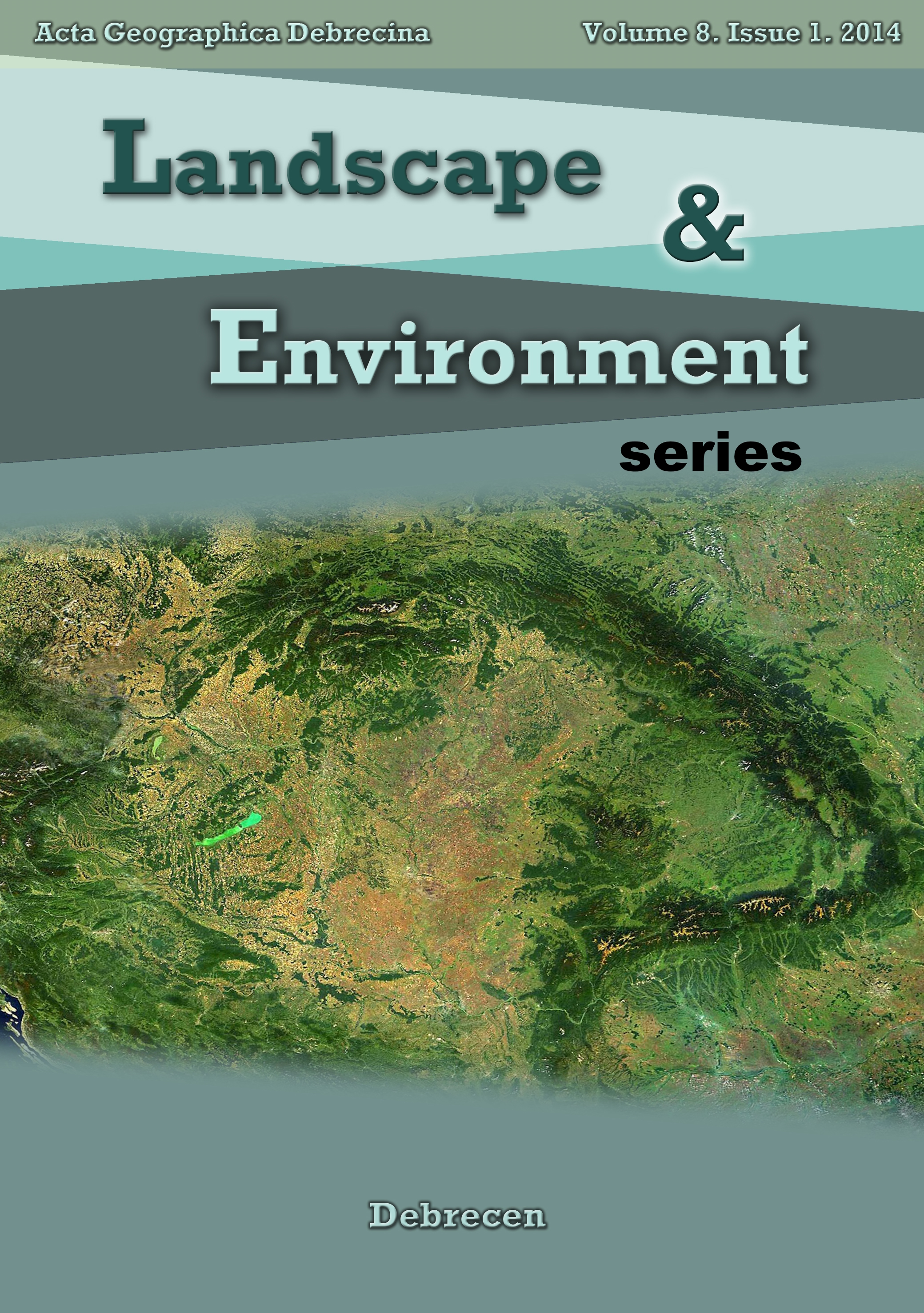Vol. 8 No. 1 (2014)
Md. Tariqul Islam. Vegetation changes of Sundarbans based on Landsat imagery analysis between 1975 and 2006
Sassan Mohammady. A spatio-temporal urban expansion modeling a case study Teheran metropolis, Iran
Tóth Sz. - Endrődi J. - Hotváth G. Cadastral survey of unique landscape features via the examples of Vászoly, Hungary
##issue.tableOfContents##
Articles
-
Vegetation changes of Sundarbans based on Landsat imagery analysis between 1975 and 2006
1-9Views:502The Sundarbans in Bangladesh and India is the largest single block of tidal halophytic mangrove forest in the world. This forest is threatened by effect of climate change and manmade activities. The aim of this paper is to show changes in vegetation cover of Sundarbans since 1975 using Landsat imagery. Normalized Difference Vegetation Index is applied to quantify and qualify density of vegetation on a patch of land. Estimated land area (excluded water body) of this forest is 66% in Bangladesh, and 34% in India, respectively. Net erosion since 1975 to 2006 is ~5.9%. In vicinity of human settlement, areal changes are not observed since 1975. The mangrove forest is decreased by 19.3% due severe tropical cyclone in 1977 and 1988. Moreover, the dense forest is damaged by about 50%. However, more than 25 years is taken by Sundarbans to recover from damage by a severe tropical cyclone. The biodiversity of Sundarbans depends to fresh water flow through it. Therefore, the future of Sundarbans depends to the impact of climate change which has further effect to increasing intensity and frequency of severe tropical cyclone and salinity in water channels in Sundarbans.
pdf368 -
A spatio-temporal urban expansion modeling a case study Teheran metropolis, Iran
10-19Views:202During the past decades, urban growth has been accelerating with the massive immigration of population to cities. Urban population in the world was estimated as 2.9 billion in 2000 and predicted to reach 5.0 billion in 2030. Rapid urbanization and population growth have been a common phenomenon, especially in the developing countries such as Iran. Rapid population growth, environmental changes and improper land use planning practices in the past decades have resulted in environmental deterioration, haphazard landscape development and stress on the ecosystem structure, housing shortages, insufficient infrastructure, and increasing urban climatological and ecological problems. In this study, urban sprawl assessment was implemented using Shannon entropy and then, Artificial Neural Network (ANN) has been adopted for modeling urban growth. Our case study is Tehran Metropolis, capital of Iran. Landsat imageries acquired in 1988, 1999 and 2010 are used. According to the results of sprawl assessment for this city, this city has experienced sprawl between 1988 to 2010. Dataset include distance to roads, distance to green spaces, distance to developed area, slope, number of urban cells in a 3 by 3 neighborhood, distance to fault and elevation. Relative operating characteristic (ROC) method have been used to evaluate the accuracy and performance of the model. The obtained ROC equal to 0.8366.
pdf116 -
Cadastral survey of unique landscape features via the examples of Vászoly, Hungary
20-35Views:160In the Hungarian legal system the Act on Nature Conservation contains a peculiar category, the notion of the unique landscape feature. The unique landscape feature is a natural or man-made object which represents value for local people. The purpose of this study is on the one hand to familiarize this specific category, on the other hand to introduce the method of cadastral survey via the example of a small Hungarian settlement, Vászoly. Vászoly and its surroundings are situated on the south-eastern part of the Balaton Uplands, a part of the Bakony Region. In spite of the survey, the distribution of the features among the categories reflects the national tendency, that is, most of the cadastred landscape features in Vászoly are cultural-historical ones, because these types of features are located mostly within the inner areas of the settlements, which makes them easier to survey. However, these features are not always really valuable. It can be stated that most of the features are related to the settlement (mostly features of sacral traditions) and agricultural production (first of all features of viniculture). Surveying the sets of the unique landscape features, the changing landscape patterns, the certain landscape characters and the peculiarities of the landscape explain their origin and former function.
pdf119
